The good news on maternal mortality: Uncertainty about everything except the advocates' response
UPDATE 4/15, 4pm EDT: see end of post. The NYT lead story today (as well as other media) reports a new study with some very good news:
For the first time in decades, researchers are reporting a significant drop worldwide in the number of women dying each year from pregnancy and childbirth, to about 342,900 in 2008 from 526,300 in 1980.
So happy about success! Alas, the universal rule with media reports of development statistics is that they are mishandled so badly that they raise more questions than answers, such as:
(1) why is this reported as an absolute number rather than a maternal mortality rate (usually per 100,000 live births), which is the usual thing of interest, and would show even better news because of the large population increase since 1980?
(2) why attempt to estimate it for the whole world rather than only for those countries that have the most solid data?
(3) it's well known that maternal mortality numbers over the years have been mostly made up, a problem that has only recently been (partially) corrected (i.e. sometime since 2000). The 1980 and 1990 numbers are worthless, so the headline-grabbing sentence above is the wrong way to present the findings. Indeed the NYT story notes:
the new study was based on more and better data, and more sophisticated statistical methods than were used in a previous analysis by a different research team that estimated more deaths, 535,900 in 2005.
The story cannot simultaneously report "more and better data" and report a trend "drop," since the new numbers will not be comparable to the old "less and inferior" data. We can't know from this story what part of the change is due to change in methods, and which is real.
The most clear and interesting thing to emerge from this story is this:
But some advocates for women’s health tried to pressure The Lancet into delaying publication of the new findings, fearing that good news would detract from the urgency of their cause, Dr. Horton said in a telephone interview.
“I think this is one of those instances when science and advocacy can conflict,” he said.
Dr. Horton said the advocates, whom he declined to name, wanted the new information held and released only after certain meetings about maternal and child health had already taken place.
He said the meetings included one at the United Nations this week, and another to be held in Washington in June, where advocates hope to win support for more foreign aid for maternal health from Secretary of State Hillary Rodham Clinton. Other meetings of concern to the advocates are the Pacific Health Summit in June, and the United Nations General Assembly meeting in December.
People have long accused aid officials and advocates of being afraid of putting themselves out of business by success, but it's rare that such an episode is documented so clearly. Sad, very sad.
But there does seem to be some good news on maternal mortality in here somewhere, so let all non-self-interested people celebrate!
UPDATE: Columbia Journalism Review on 4/14 posted a story on the massive confusion caused by the press on both aspects of the story discussed here.
 From Aid to Equality
From Aid to Equality





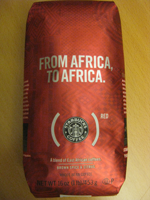
 Women posting their bra color on Facebook for Breast Cancer Awareness
Women posting their bra color on Facebook for Breast Cancer Awareness The most obvious giveaway is that they snatched the young lady’s handbag out of her right hand, leaving her holding – nothing. This made the forensic photo expert suspicious and he also caught Victoria’s Secret in more subtle photo shopping. Most predictably, they increased the young lady’s bust size. (This is documented in
The most obvious giveaway is that they snatched the young lady’s handbag out of her right hand, leaving her holding – nothing. This made the forensic photo expert suspicious and he also caught Victoria’s Secret in more subtle photo shopping. Most predictably, they increased the young lady’s bust size. (This is documented in 
 When you give an anecdote about one poor individual, make sure it is as extreme and non-representative as possible, such an HIV-positive famine victim being chased by child soldiers
When you give an anecdote about one poor individual, make sure it is as extreme and non-representative as possible, such an HIV-positive famine victim being chased by child soldiers Suggest to the readers some demonstrative action that they can do to end poverty,such as wearing a white band on their wrist. How these actions affect global poverty does not have to be completely spelled out.
Suggest to the readers some demonstrative action that they can do to end poverty,such as wearing a white band on their wrist. How these actions affect global poverty does not have to be completely spelled out. Use a precise definition of poverty: living on less than $1.25 a day, adjusted for purchasing power. Give the precise number who fit that definition.
Use a precise definition of poverty: living on less than $1.25 a day, adjusted for purchasing power. Give the precise number who fit that definition.
 Display pictures of poor children (alternatively women).
Display pictures of poor children (alternatively women).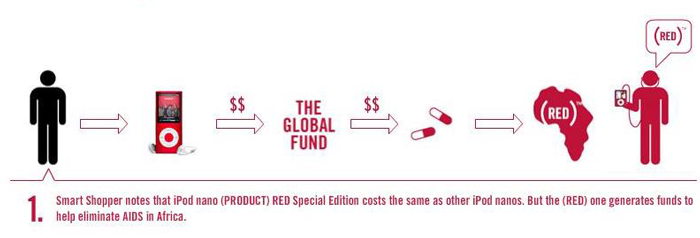
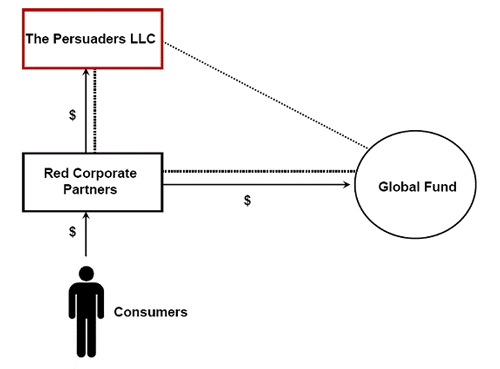
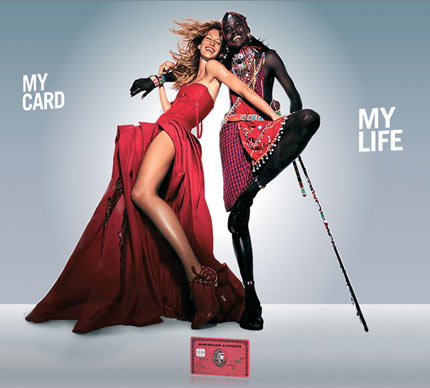
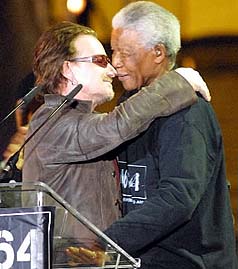 An expert commission of African leaders today announced their plan for comprehensive reform of music band U2. Saying that U2’s rock had lost touch with its African roots, the commission called for urgent measures to halt U2’s slide towards impending crisis.
An expert commission of African leaders today announced their plan for comprehensive reform of music band U2. Saying that U2’s rock had lost touch with its African roots, the commission called for urgent measures to halt U2’s slide towards impending crisis.